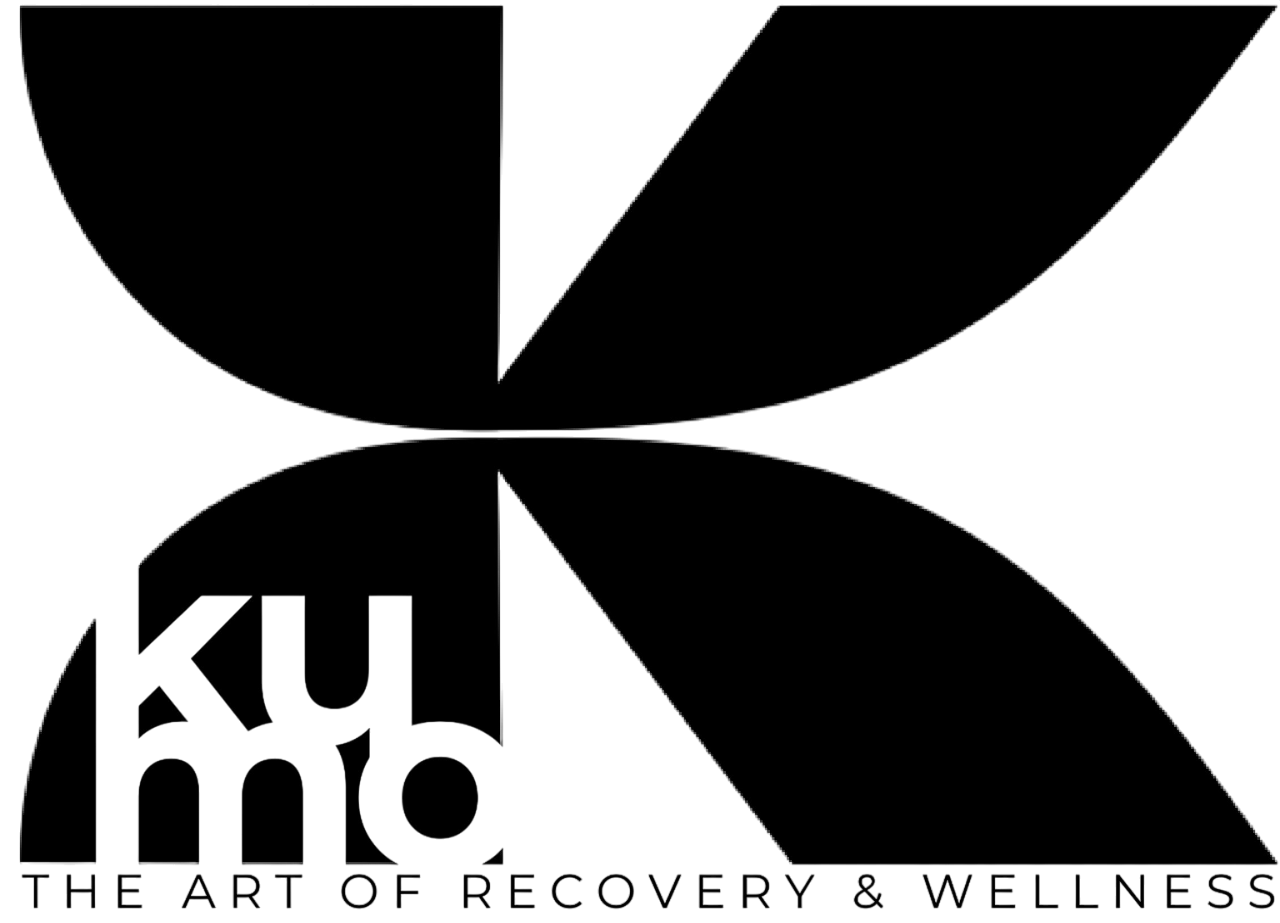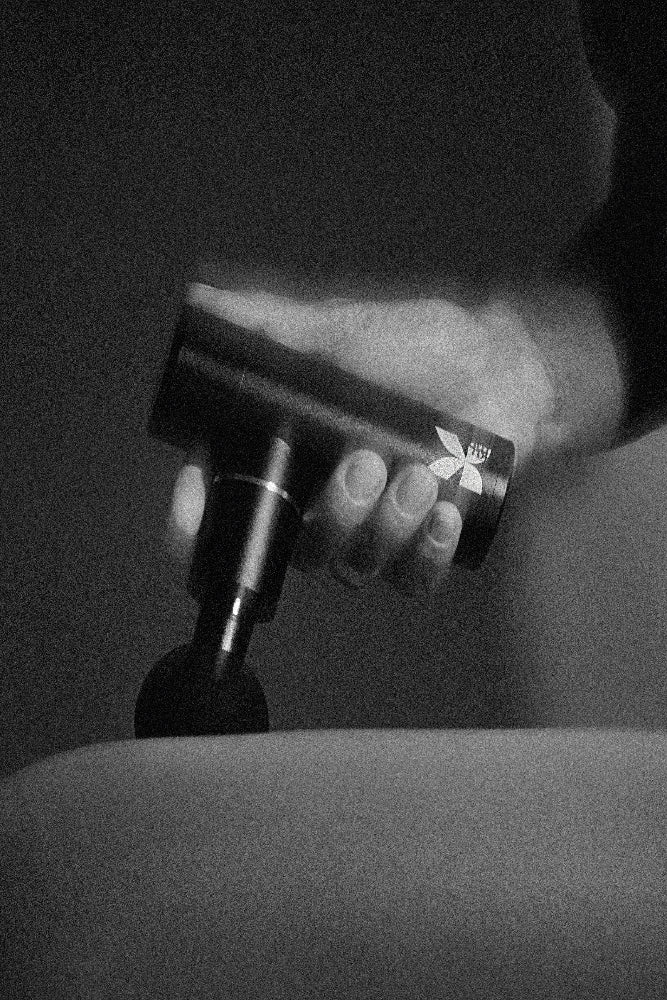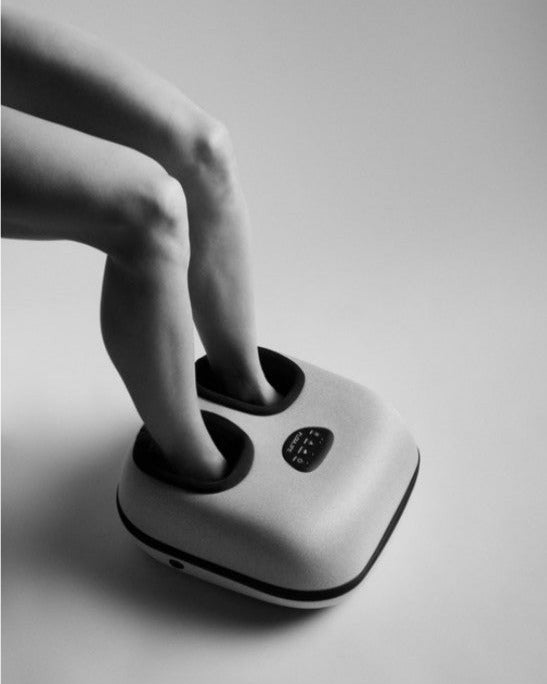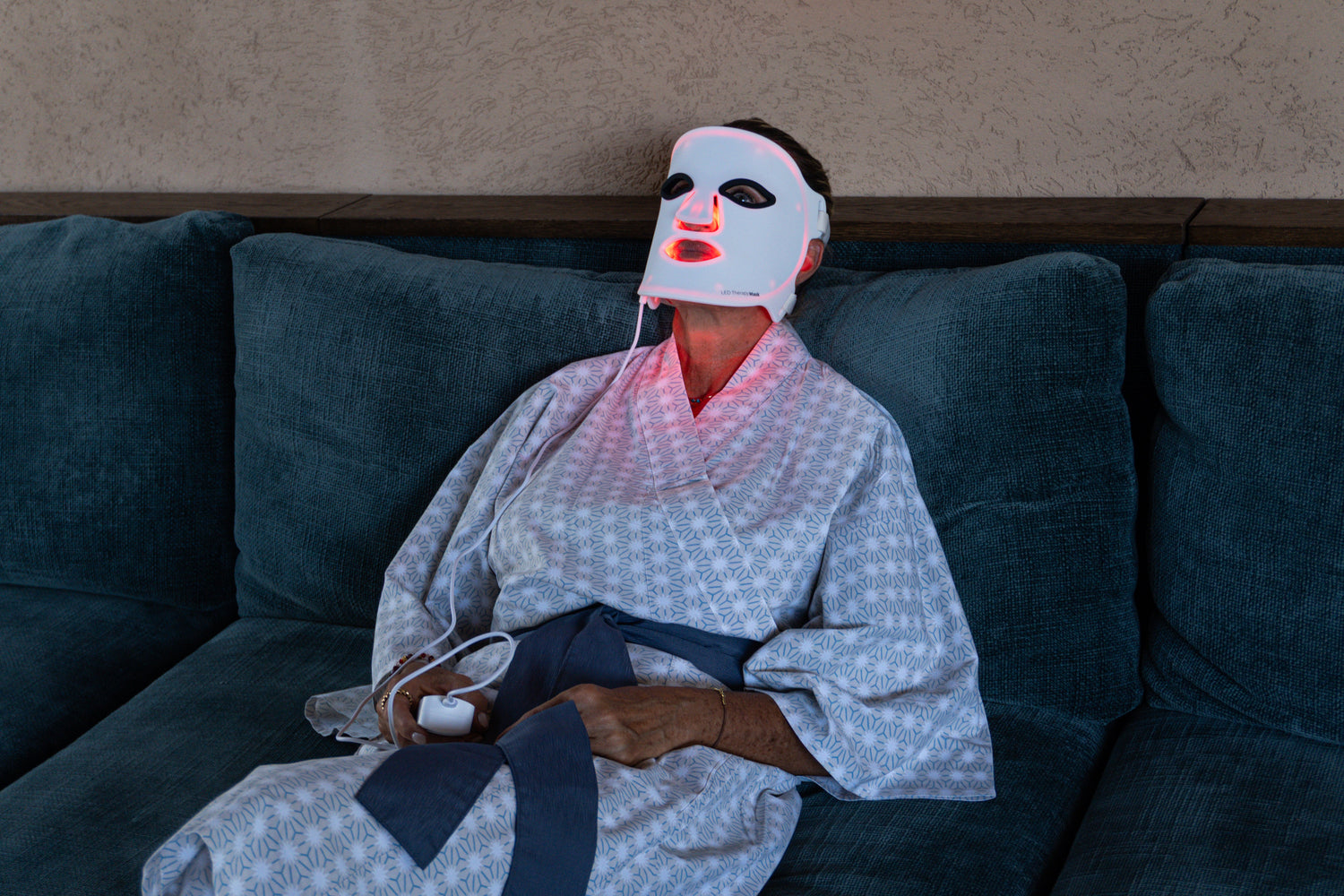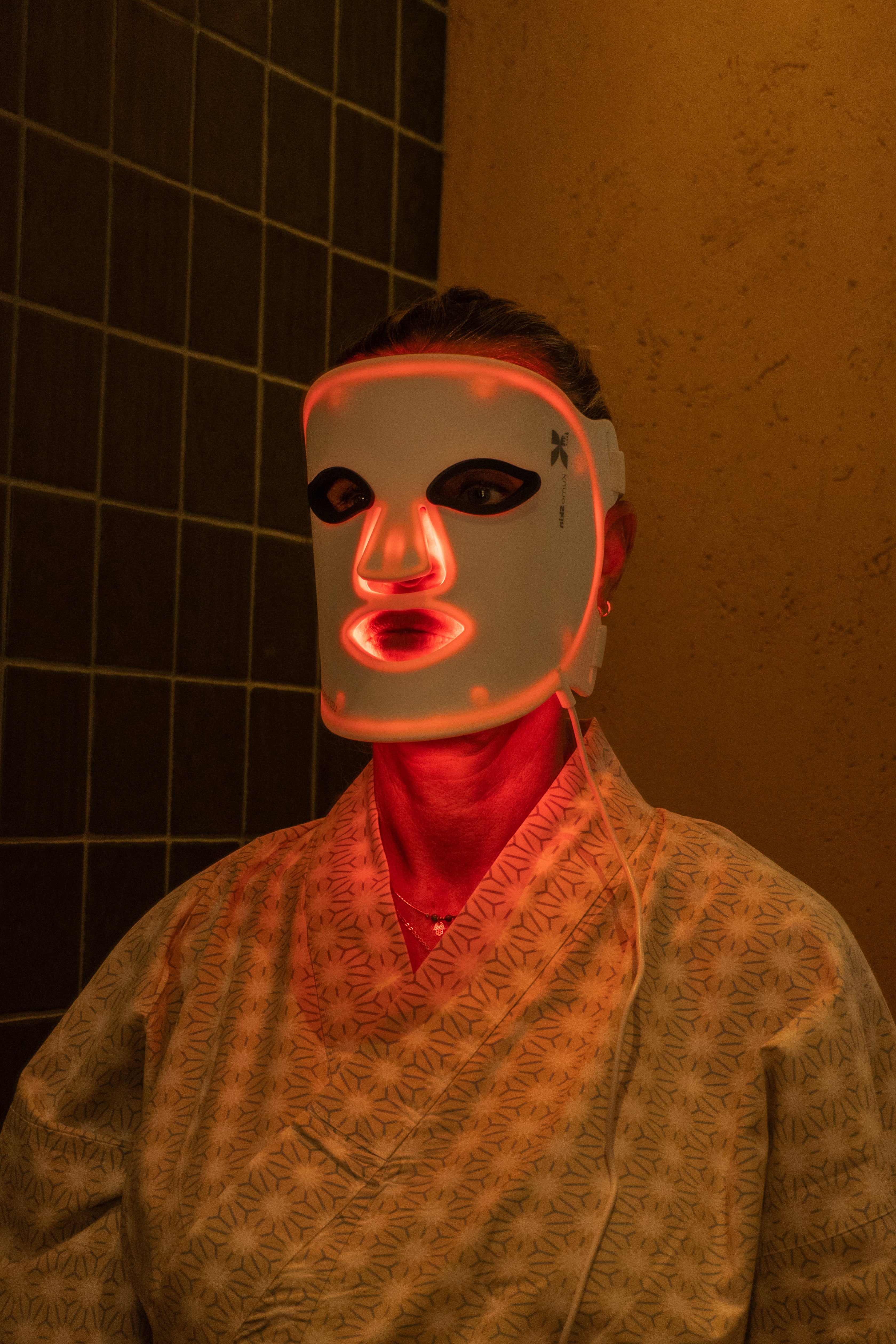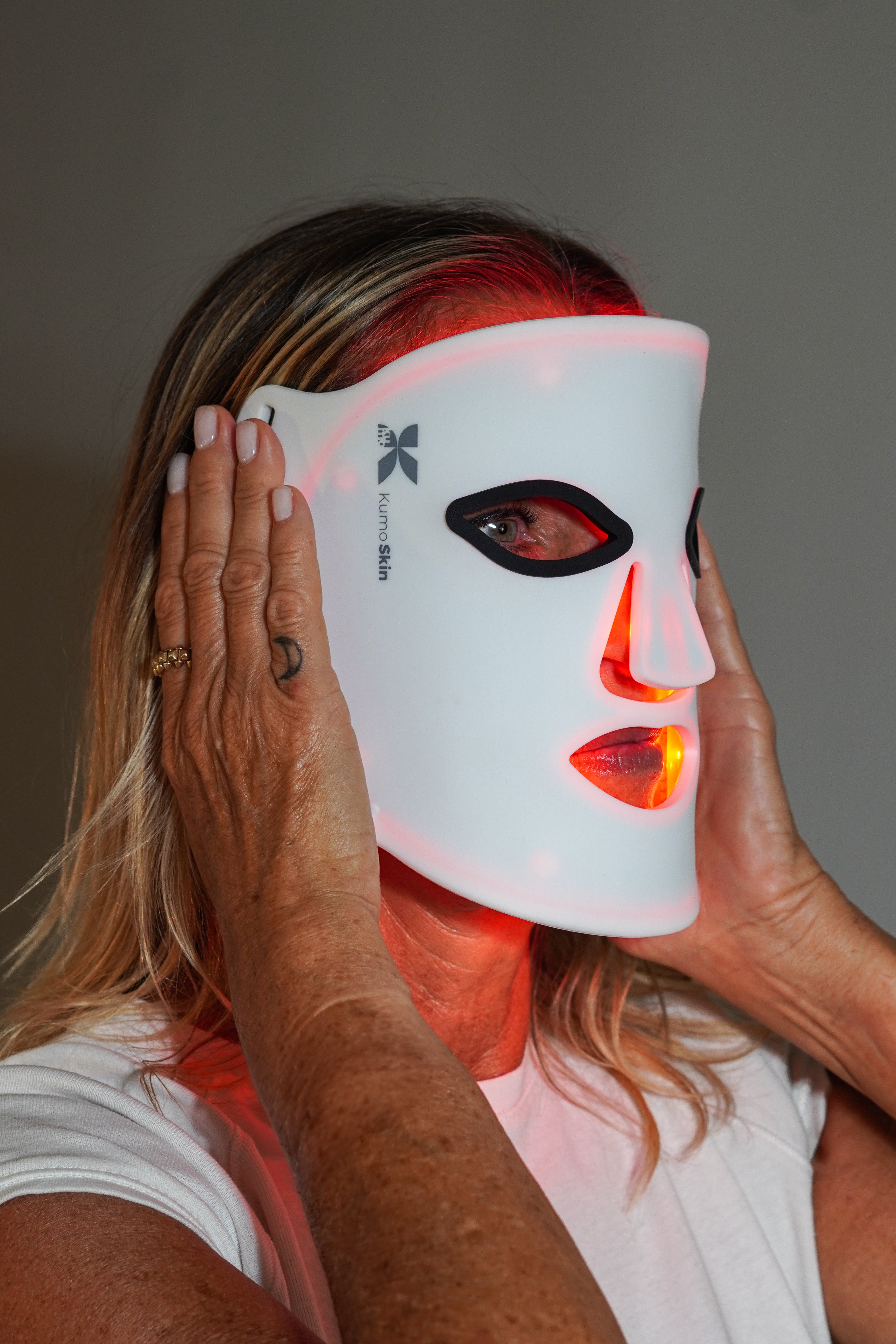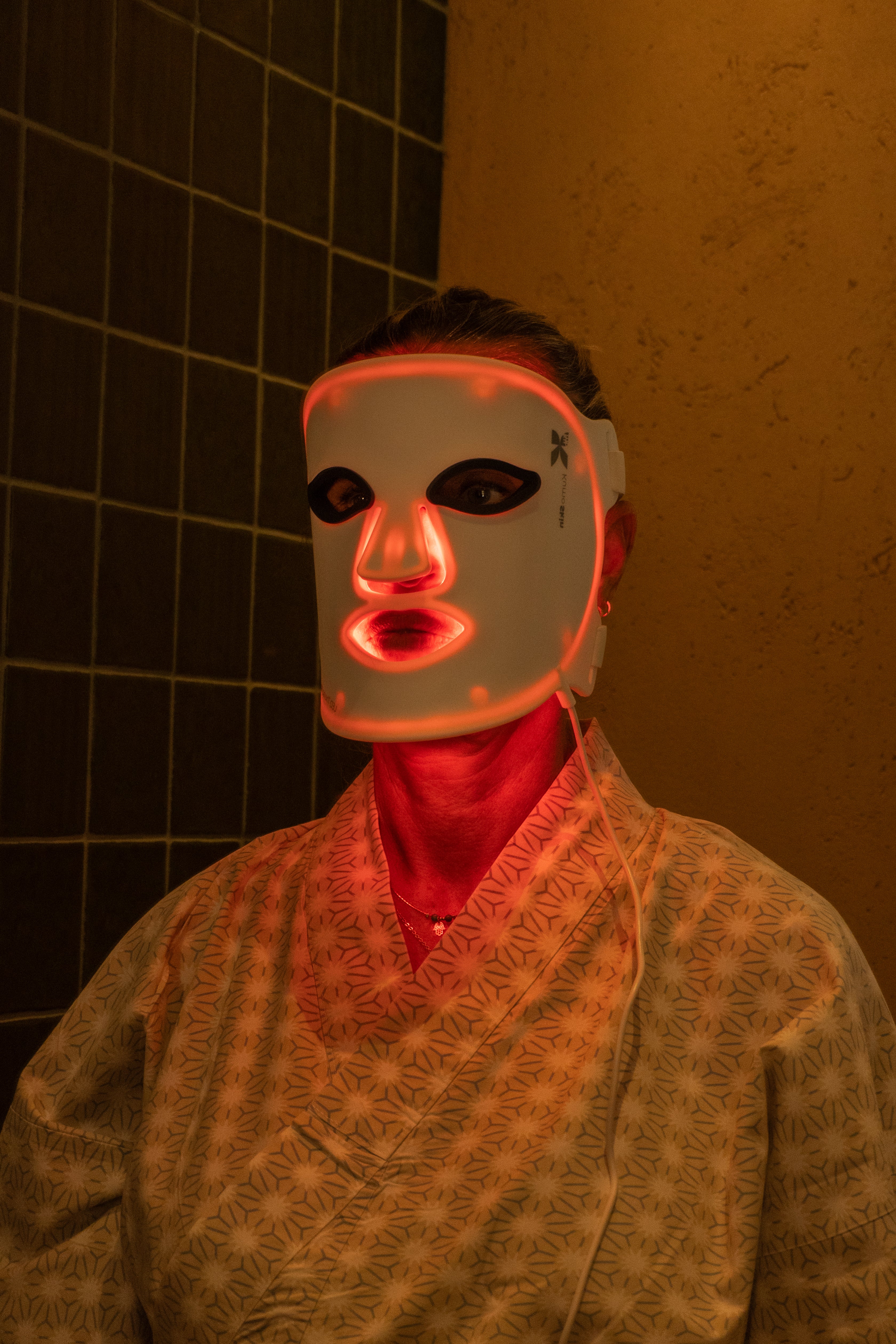LED facial mask: what it is, how it works, and how to use it in your routine.
The LED facial mask is a phototherapy device that uses different wavelengths of light to stimulate the skin's natural processes. Whether used at home or in a salon, it can help improve the appearance of acne, calm inflammation, and support collagen synthesis without pain or downtime. Below, I'll clearly explain its science, benefits, correct use, safety, and how to integrate it into your daily wellness.
Coming soon
- It works through photobiomodulation: light stimulates skin cells to repair, reduce inflammation and regenerate.
- Key Colors: Red/Near IR (Tightening & Repair), Blue (Acne), Amber/Green (Tone & Brightening).
- Short, consistent sessions without heat or UV radiation; consistency makes all the difference.
- Use it on clean skin, with protected eyes and following the device manual.
- Safe for most; consult if you are taking photosensitizing medications or are pregnant.
What is an LED facial mask?
An LED facial mask is a beauty device that emits visible and near-infrared light at low intensities to modulate the skin's biological processes. Unlike lasers, it does not exfoliate or burn; it works without generating significant heat or UV radiation. It comes in rigid or flexible formats, and panels that cover the entire face or specific areas.
These masks incorporate light-emitting diodes calibrated to specific wavelengths. Each color penetrates to a different depth and triggers specific responses, from regulating acne-related bacteria to promoting collagen production. The technology derives from photobiomodulation, which has been widely studied in dermatology and regenerative medicine.
How it works: The science of photobiomodulation
Photobiomodulation describes how low-intensity light beneficially alters cellular activity. In the skin, certain chromophores (e.g., mitochondrial cytochrome c oxidase) absorb red and near-infrared light, increasing ATP, modulating reactive oxygen species and nitric oxide, and activating repair pathways. In parallel, blue light interacts with bacterial porphyrins, reducing C. acnes. General review in dermatology: DermNet NZ (LED phototherapy) and clinical synthesis at Harvard Health.
Red and near-infrared (NIR) light
- Objective: regeneration, support of collagen synthesis and reduction of microinflammation.
- Expected result: more elastic and luminous skin, softening of fine lines and improved recovery of the skin barrier with consistent use.
- Scientific basis: R/IR modulates mitochondrial function and tissue repair processes; see reviews on photobiomodulation in skin (evidence synthesis in the Cochrane Library, light therapies for acne ; scope of evidence varies by indication).
Blue light
- Objective: support in the control of mild to moderate acne.
- Mechanism: Photoexcites C. acnes porphyrins, generating reactive species that reduce its charge.
- Considerations: It is often combined with red to modulate inflammation and promote post-outbreak repair.
Other colors (amber/green)
- Amber/Yellow: Used to soothe and brighten, with a focus on temporary redness.
- Green: oriented to the appearance of spots and chromatic irregularities.
- Note: Clinical evidence is most consistent for blue and red; the rest may be adjuvant depending on individual response.
| Color/light | Approx. wavelength | Main objective | Common indications |
|---|---|---|---|
| Blue | 415–470 nm | Antibacterial action | Acne/active inflammation |
| Red | 620–660 nm | Collagen and repair | Photoaging, texture |
| Near infrared | 810–850 nm | Deep regeneration | Elasticity, recovery |
| Amber/green | 520–590 nm | Calm/tone | Redness, luminosity |
Tip: Consistency (weeks/months) is more important than maximum intensity. Always follow your device's manual.
Potential benefits and who it's for
- Skin with signs of photoaging: support for collagen and elasticity, improved texture and luminosity.
- Mild to moderate acne: Non-invasive help to reduce breakouts and associated redness.
- Sensitive/Reactive Skin: Gentle frequencies and modes can soothe and strengthen the barrier over time.
- Uneven tone: certain colors contribute to the appearance of spots and opacity.
- High-performance routines: after exercise or stress, red/IR light can contribute to skin comfort and a feeling of overall recovery, along with sleep and rest habits.
To explore quality devices designed for home use, visit KUMO's LED light therapy collection.
How to use it at home: practical steps
- Gentle cleansing: Removes makeup, SPF, and sweat. Dries without rubbing.
- Eye protection: Wear the included goggles or keep your eyes closed if permitted by the manufacturer.
- Program selection: Choose color/mode according to your goal (red/IR for firmness; blue for acne).
- Duration and frequency: Keep sessions short and regular. As a home guide, many manufacturers recommend sessions of several minutes, several times a week. Adjust according to tolerance and results.
- Post-treatment: Apply moisturizer and, during the day, sunscreen. Avoid potentially irritating active ingredients just before the session (e.g., strong retinoids).
- Consistency: Review your progress with monthly photos and adjust your plan.
If you have any questions about use, please write to us from the contact page.
Safety, contraindications and side effects
LED masks do not emit UV light and, when used correctly, are considered low-risk. Possible transient effects include mild redness, dryness, or eye discomfort if not properly protected. Avoid use if you have photosensitive migraines, photosensitive epilepsy, open wounds in the area, or if you are taking photosensitizing medications, unless medically indicated. Consult your healthcare professional during pregnancy or breastfeeding.
Clinical evidence supports its use as an adjuvant in various indications, with variability between devices and protocols; methodological review in Cochrane (2016) for acne and educational material in Harvard Health.
Results: what to expect and when
Changes are usually gradual. In anti-aging routines, improvements in texture and radiance appear after several weeks of consistent use, with cumulative progress over the medium term. In acne, blue light can help reduce active breakouts and associated redness when integrated into a proper routine.
Important: Results depend on skin type, consistency, device quality, and complementary care (cleansing, hydration, photoprotection). LED does not replace medical treatments when necessary; it works best as a supportive tool. Consult clinical resources such as DermNet NZ to understand the expected results for each indication.
Combine with your recovery and performance routine
The KUMO philosophy integrates aesthetics, technology, and performance. You can complement the LED mask with:
- Rest and muscle recovery: Red light can promote a feeling of recovery; combine it with pressure therapy boots to boost circulation in tired legs.
- Myofascial release: Before or after your workout, try a percussive massage with KumoPulse Air to relax your muscles.
- Sleep hygiene and habits: Daily consistency multiplies benefits. Discover the comprehensive approach at KUMO .
Frequently Asked Questions
How many times a week should I use an LED facial mask?
For home use, consistency is key. Many manufacturers' guidelines suggest several short weekly sessions, followed by less frequent maintenance after the first few weeks. Adjust based on your goal (e.g., active acne support vs. anti-aging maintenance) and skin tolerance. If you experience irritation, reduce the frequency or duration. If you have ongoing dermatological treatments or are very reactive on your skin, consult your specialist to coordinate protocols and avoid overlapping with photosensitizing active ingredients.
Does LED replace my routine care or medical treatments?
No. LED phototherapy is an adjunct. Maintain gentle cleansing, hydration, and daily sun protection. For moderate-to-severe acne, persistent melasma, rosacea, or extensive scarring, you need a professional evaluation. LED can be combined with retinoids, AHA/BHA, or medical procedures, spacing out applications to minimize irritation. In each case, follow your dermatologist's plan and the device manual to ensure compatibility and proper sequencing.
What light colors do I need for my lens?
- Red and near infrared: support collagen, elasticity and recovery.
- Blue: adjuvant against active acne due to its action on C. acnes.
- Amber/green: seeking a more even and calm tone. Many devices allow you to combine programs (e.g., blue + red) to address flare-ups and inflammation simultaneously. Prioritize your main goals and assess results regularly; you'll adjust colors and modes as your skin responds.
Is it safe for eyes and sensitive skin?
LED, when used properly, is low-risk and does not emit UV light. However, protect your eyes with goggles or strictly follow the manufacturer's recommendations, especially when using intense or blue light modes. For sensitive skin, start with shorter sessions, lower frequency, and soothing programs (soft red/amber), assessing tolerance. Discontinue if you notice significant discomfort or worsening. If you are taking photosensitizing medications or have photosensitive neurological conditions, consult a doctor before starting.
Can I combine it with exercise and muscle recovery?
Yes. Many people incorporate red/IR light after training to promote skin comfort and a sense of overall recovery. Complement this with hydration, adequate sleep, and recovery tools like pressure therapy or massage. Find comprehensive solutions in the LED light therapy section and our pressure therapy collection . For injuries or persistent pain, seek professional guidance.
The essentials
- The LED facial mask uses photobiomodulation to support collagen, soothe, and boost repair.
- Red/IR for firmness and recovery; blue as an acne aid; amber/green for tone.
- Safe and non-invasive use, with gradual results that depend on consistency.
- Protect your eyes, start slowly and avoid combining with irritating active ingredients just beforehand.
- Integrate LED into a 360º approach to well-being and performance.
- Ready to take the plunge? Explore our solutions at KUMO or contact us for personalized assistance.
